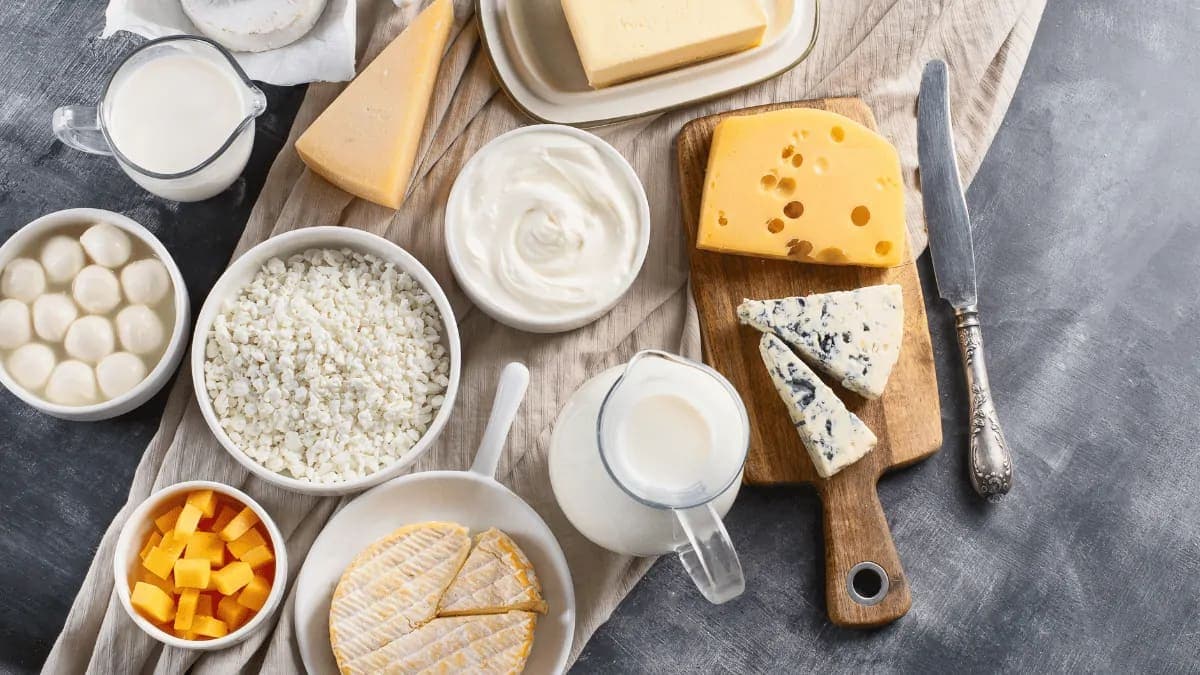Dairy plays a central and indispensable role in Indian cuisine, reflecting the country's rich agricultural heritage and cultural traditions. From creamy ghee  to versatile paneer, and a myriad of milk-based desserts, dairy products are woven into the fabric of Indian cooking. In this exploration, we delve into the significance of dairy in Indian cuisine, the different dairy products used, and their culinary applications.
to versatile paneer, and a myriad of milk-based desserts, dairy products are woven into the fabric of Indian cooking. In this exploration, we delve into the significance of dairy in Indian cuisine, the different dairy products used, and their culinary applications.
Cultural Significance:
Dairy products hold cultural, religious, and social significance in India. For millions of Hindus, the cow is considered sacred, and its milk is revered. Ghee, clarified butter made from cow's milk, is offered to deities in temples and is an integral part of various rituals. Dairy is also an essential component of many Indian festivals and celebrations.

1. Ghee (Clarified Butter):
Ghee is a cornerstone of Indian cooking. It is made by simmering butter, which separates the milk solids from the pure butterfat, resulting in a golden, fragrant liquid. Ghee is treasured for its rich, nutty flavour and its ability to enhance the taste of many dishes. Here's how ghee is used in Indian cuisine:
- Cooking Medium: Ghee is a preferred cooking medium due to its high smoke point. It is used for sautéing, frying, and deep-frying, imparting a delightful aroma and taste to dishes.
- Tadka (Tempering): Many Indian dishes begin with the technique of tempering, where ghee is heated and infused with spices like cumin, mustard seeds, and asafoetida. This flavoured ghee, known as tadka, is drizzled over dals, curries, and rice for added depth of flavour.
- Rituals: Ghee is offered in religious ceremonies and rituals, symbolising purity and enlightenment.
2. Paneer (Indian Cottage Cheese):
Paneer is a fresh cheese widely used in Indian vegetarian cuisine. It is prepared by curdling milk with an acid, such as lemon juice or vinegar, and then straining the curdled milk to separate the whey. The resulting cheese is soft, creamy, and versatile:
- Main Dishes: Paneer stars in a range of savoury dishes, including paneer tikka, paneer butter masala, and palak paneer. Its mild, absorbent nature allows it to take on the flavours of various spices and sauces.
- Snacks: Paneer is often grilled, fried, or skewered to make delightful snacks like paneer pakoras and paneer rolls.
- Sweets: Paneer is a key ingredient in several Indian sweets like rasgulla, sandesh, and cham-cham.
3. Yogurt (Curd):
Yogurt is a staple in Indian households and a vital component of Indian cuisine. It is made by fermenting milk with live cultures, resulting in a creamy, tangy product:
- Curries and Gravies: Yogurt is used to thicken and add a pleasant tang to various curries and gravies. Chicken curry, kadhi, and mutton korma are just a few examples.
- Marinades: Yogurt-based marinades tenderise meat and infuse it with flavour. Tandoori chicken and chicken tikka are marinated in yoghurt, along with spices and herbs, before being grilled.
- Lassi: A popular yoghourt-based beverage, lassi is made by blending yoghurt with water, sugar, and sometimes fruit or spices. It's a refreshing drink enjoyed throughout India.
4. Buttermilk (Chaas):
Buttermilk, known as chaas in India, is a refreshing dairy-based beverage made by diluting yoghurt with water and flavouring it with spices like cumin and salt. It serves as a cooling drink, particularly in hot weather, and is believed to aid digestion. Chaas is a common accompaniment to spicy Indian meals and is enjoyed for its light, tangy taste and digestive properties.
5. Milk in Tea and Coffee:
Milk plays a pivotal role in Indian tea and coffee culture. In chai (tea), strong black tea is brewed with spices, then mixed with milk and sugar. This sweet and spiced beverage is a beloved staple. Coffee in India, especially in South India, is made by brewing coffee beans with milk and sugar, resulting in a rich and aromatic coffee experience that is deeply cherished across the country.
6. Dairy in Sweets and Desserts:
Indian sweets are renowned for their indulgent use of dairy products. Here are some examples:
- Rasmalai: Spongy cheese dumplings soaked in sweetened milk flavoured with cardamom and saffron.
- Gulab Jamun: Deep-fried milk-based balls soaked in sugar syrup, often flavoured with rosewater or cardamom.
- Kheer/Payasam: A rice pudding made with milk, sugar, and aromatic ingredients like cardamom and saffron. Variations include vermicelli kheer and paneer payasam.
7. Condensed Milk:
Condensed milk is a sweet and thick dairy product used in Indian sweets and desserts. It's made by simmering milk and sugar until most of the water content evaporates, resulting in a dense, sweet mixture. Condensed milk is a key ingredient in popular Indian sweets like barfi and fudge, adding creaminess and sweetness to these indulgent treats, which are enjoyed on various occasions and celebrations.
Dairy is the backbone of Indian cooking, enriching dishes with flavour, texture, and nutrition. It is deeply intertwined with the culture, religion, and traditions of India, making it an essential and cherished part of the country's culinary landscape. Whether it's the decadent sweetness of condensed milk in a dessert or the aromatic richness of ghee  in a curry, dairy elevates Indian cuisine to new heights, making it a gastronomic delight enjoyed by people around the world.
in a curry, dairy elevates Indian cuisine to new heights, making it a gastronomic delight enjoyed by people around the world.




